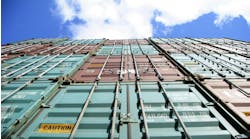In 1984, Bruce Springsteen released his "Born in the USA" album. In the song "My Hometown" he sang, "foreman says these jobs are goin' boys, and they ain't comin' back . . . to your hometown." And if you look at the data, he was prescient as manufacturing represented approximately 24% of the U.S. economy in 1985 and approximately 11% in 2009.
In mid-2008, when we at CMF Associates experienced early indications of a significant slowdown in the economy, we became concerned. Our worry stemmed from an inability to answer the following question: Where will the tailwind come from to move the economy forward again? In the 1990s, we rode the tech breeze and in the 2000s we rode the easy money of the construction trade winds. In 2008, we were running into a major headwind and we struggled to identify a structural trend that would provide the tailwinds necessary to create meaningful expansion in the economy.
We had a hunch that it might be niche manufacturing. In 2010, the U.S. economic data we were seeing with our manufacturing clients appeared to confirm the hunch. Among the reasons for the current and projected growth are:
- Increased importance of proximity of manufacturing facilities to the customer locations. The United States is the world's largest market, and dynamic changes in customer preferences happen with increasing frequency and with trends and preferences fleeting. Those manufacturers who sell to end consumers are finding increasing value in locating facilities closer to their end customer so as to be able to react more quickly to changes in customer preferences.
- Increased risks and expense within a globally oriented supply chain. The events in Japan, overall political volatility throughout the world, weaknesses in emerging economy intellectual property and contract law, and outright firsthand experience with fraud are forcing executives to rethink the risks within their global supply chain.
- Narrowing of the labor-related cost benefits of locating in East Asia compared with Western developed economies. While there clearly remains a large difference in per-hour labor rates between the United States and Asia, in March, the U.S. Bureau of Labor Statistics issued a report that indicated the average hourly rate for Chinese manufacturing laborers was $1.36 per hour in 2008, nearly double the 2005 rate. Furthermore, recent commentary from executives at Chinese-based manufacturing companies, particularly along the coastal regions of China, indicates they are experiencing increases of 15% to 30% for skilled labor and with these increases, shortages in skilled labor.
- We are leaving an era in which labor costs were the primary driver to determining the location of a manufacturing facility to an era in which proximity to a reliable energy source begins to take equal precedence. The United States is sitting on the largest national gas supplies in the world. Certain sections of the country, particularly in the Marcellus Shale region running from southern New York through Pennsylvania and into West Virginia and Ohio, are known as the "Saudi Arabia of natural gas." Look for the natural gas industries and the state and local governments to begin to work together to create additional compelling reason for manufacturers to locate in these regions of the country.
Transitioning through tough economic times often has the benefit of clearing away preconceived notions and dated strategies. Take a fresh look at the landscape of your entire supplier-to-customer ecosystem. Talk with them about their strategies and their evolving business model and get additional perspective on how they are addressing the risks and opportunities in a world that has billions more people as potential customers, but a world that is also more volatile. Following are some of the tactical ideas that growth-oriented niche manufacturers are adopting:
- Lean -- all around
- Flexible scheduling and alternative sourcing
- Market-based pricing
- Portfolio and product-level profitability analyses
- Bundled, higher value service and product offerings
To cite an example, Pittsburgh had its roots as a manufacturing center because it was located close to a large energy source (coal and timber), had access to river -- and later rail -- transportation and experienced a significant increase in manufacturing activity when the War of 1812 cut off the supply of manufactured products from Europe. Could energy, transportation and international volatility provide the same spark to U.S. manufacturing in general?
Thomas Bonney, CPA, is founder and managing director of CMF Associates. CMF specializes in financial and operational consulting, recruiting and organizational design for publicly and privately held middle-market businesses as well as for private equity firms and their portfolio companies.



